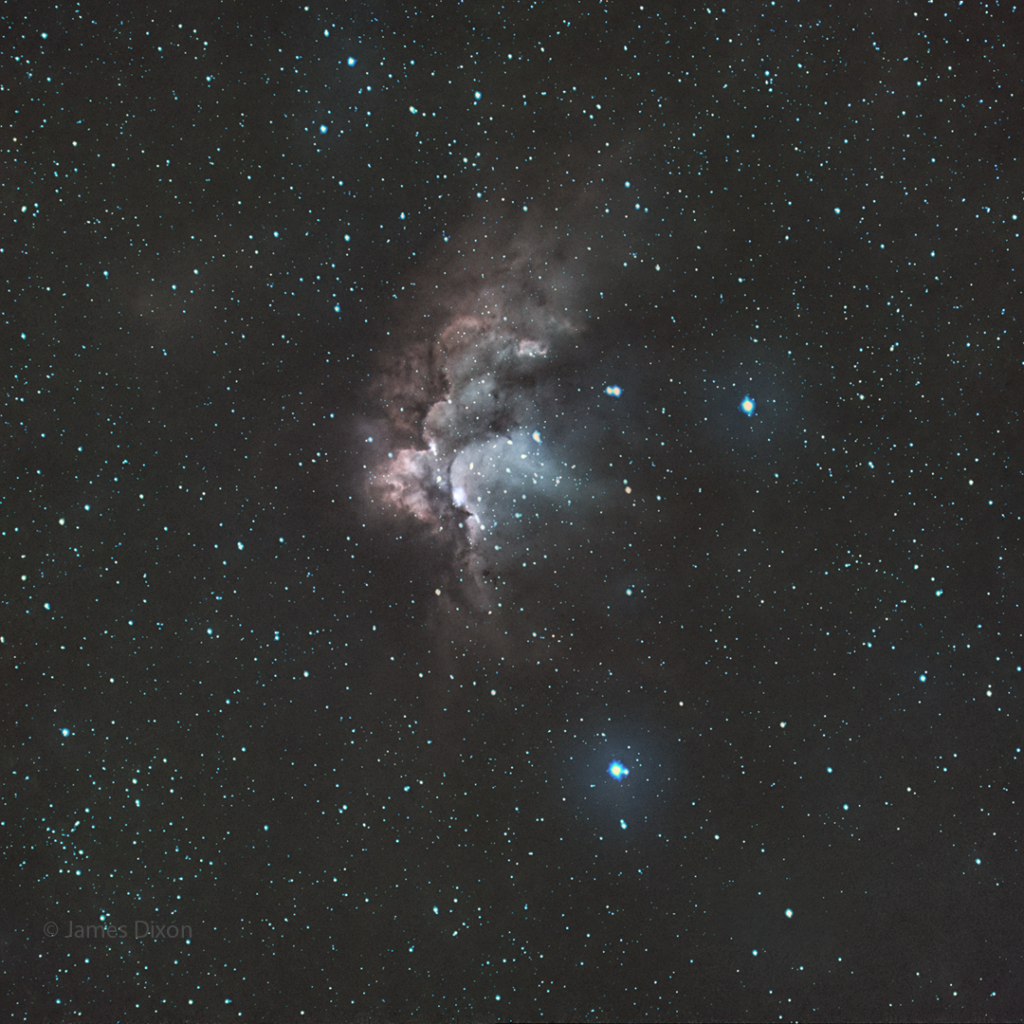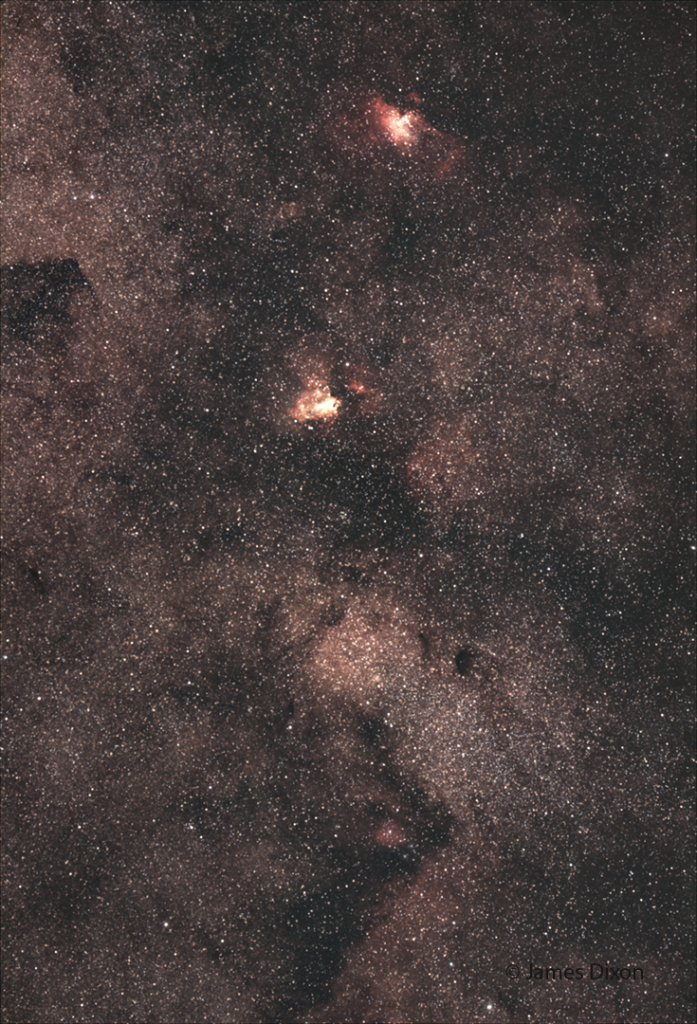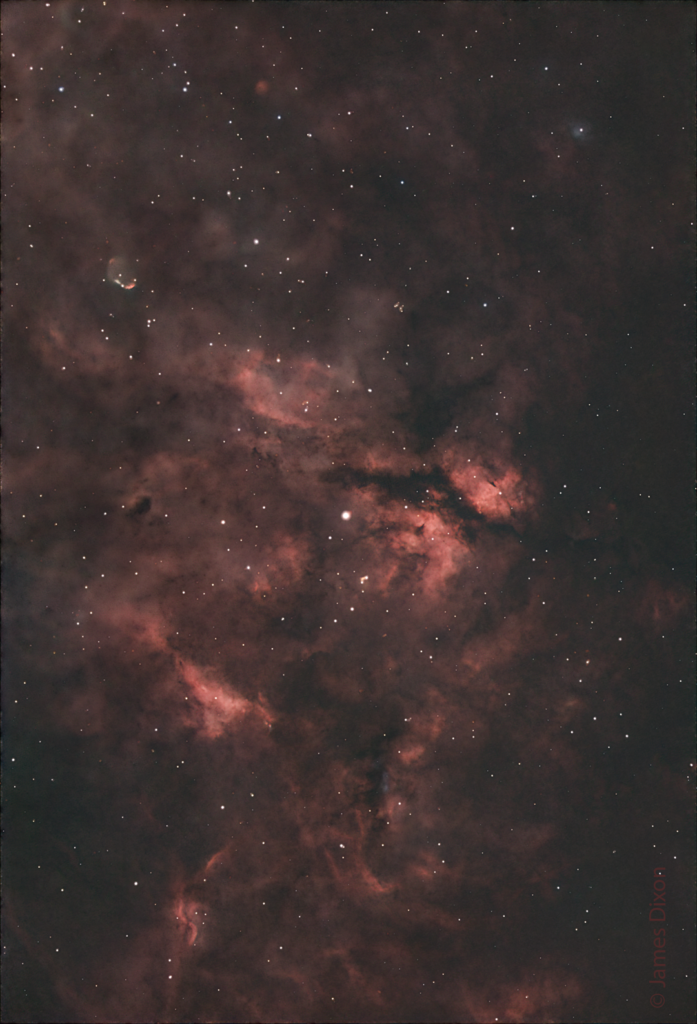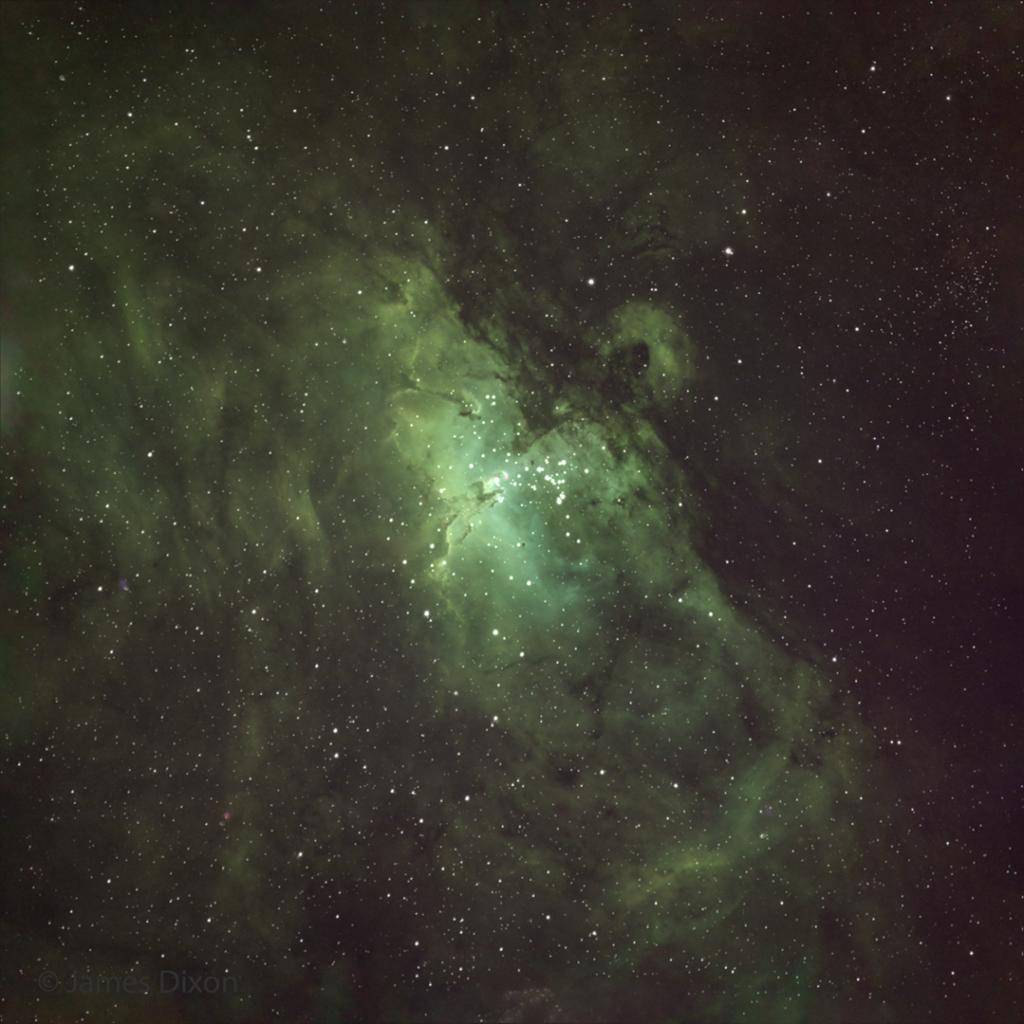These were taken between August 3 and 7 during several days of clear weather. You can click on any for larger image.

The Veil Nebula in one picture. I used my 135mm Samyang lens with my ASI294MC Pro and Antlia Ultra RGB Triband filter. 12 five minute subs. https://en.wikipedia.org/wiki/Veil_Nebula
Messier 13, aka M13, in Hercules. My 11″ SCT at f/1.9 with ASI533MC Pro and Antlia Quadband filter. 72 one minute subs. https://en.wikipedia.org/wiki/Messier_13


NGC 7380. aka the Wizard Nebula, in Cepheus. My 11″ SCT at f/1.9 with the ASI533MC Pro and Antlia Quadband filter. 24 three minute subs. https://en.wikipedia.org/wiki/NGC_7380



